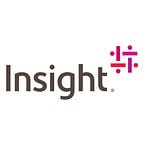Businesses Are Rapidly Migrating to the Cloud — but at What Cost to Security?
By Jason Rader, Insight CISO
It’s National Cybersecurity Awareness Month, and Insight’s team of experts strives to help organizations navigate security and compliance complexity. So, what are the safe practices associated with dispersed workforces, platforms, edge and IoT? Read on and go to insight.com to learn more.
Digital transformation has accelerated at extraordinary speeds. Across every industry, significant changes have been made in operating systems, networking, workforce structure and more. Compounded by the sudden transition to remote work, entire systems — and their sensitive data — have shifted to the cloud.
While there are immense benefits to cloud computing (increased efficiency, accessibility, cost savings and more), the heightened risks in cybersecurity require extensive planning — a step not easily afforded with rapid migration. Out of necessity, companies have fast-tracked their cloud migration plans, leaving teams and data vulnerable to cyberattack.
As we navigate a new era of work, many teams will remain permanently remote, while others have adopted a hybrid-workforce model: a mix of on-site and remote employees. The cloud sector has shouldered the heavy burden of workforce transformation, and we’re beginning to feel the full weight of these changes, as well as their larger implications.
According to a Devo Technology report, “Beyond Cloud Adoption: How to Embrace the Cloud for Security and Business Benefit,” 90% of organizations increased their public cloud computing usage as a result of the global pandemic. Developed through a survey of IT and security personnel, the report examines whether and how cloud computing is changing security practices and technologies.
The study found that:
- 68% believe that cloud computing has made IT and security operations more complex.
- 80% of survey respondents agree that cloud computing has led to an increase in the amount of security data to analyze.
- More than three-quarters (79%) of organizations expect cloud computing security spending to increase in the next 12 months.
Along with complex operations and new data, transitioning to the cloud presents a host of challenges. The cloud is vast and intricate system, and migration can result in reduced visibility and control, compliance violations, and increased risk of malware and data breaches.
Successful cloud adoption requires knowledge of cyberthreats, ongoing management and tactical security decisions.
Below are some of the most pressing risks to keep in mind with continued cloud migration, as well as software solutions to bolster your defenses:
Risk #1: Exploited cloud applications
According to data released by IBM, the most common entry point for attackers in cloud-related cases happens via cloud applications, including tactics such as brute-forcing, exploitation of vulnerabilities and misconfigurations. These vulnerabilities often occur due to “shadow IT,” when an employee goes outside approved channels and stands up a vulnerable cloud app.
Defense: Application security software
Application security can minimize the risk of threats, breaches and code hijacking. With the right tools, you’ll obtain account authentication and authorization, records of users’ in-app activity and encryption for cloud-based data. Powerful post-deployment protection will keep your team working securely with continued access to the apps they need.
Risk #2: Ransomware attacks
Ransomware is quickly becoming the new cyberweapon of choice for hackers. A form of extortion malware, ransomware can encrypt your operating system and files, demanding a ransom for their release. This and other malicious software create vulnerabilities for the cloud, commonly making its way into your system through phishing emails and poorly configured servers.
Defense: Email security + network and infrastructure security
Email security software delivers a robust defense against malicious messages in your inbox, mitigating the risks of phishing attempts, viruses, malware and spam messages. Advanced email security will deliver a robust defense against these attacks.
Additionally, boosted security for your network devices and infrastructure will minimize vulnerabilities across your IT environment. These software solutions will secure your internal communications, resource sharing, and data and user files.
Risk #3: Data breach
Data is the backbone of your modern business, and its protection is vital. With the move toward remote and hybrid work, companies are increasingly storing sensitive data within the cloud. This results in a heightened risk for data loss, as hackers now have access to personal files and intellectual property in the event of a cloud breach.
Defense: Data security + Identity and access management
Data security solutions will keep your most critical information protected, compliant and uncorrupted, spanning tools for encryption, access, tokenization and more. Identity and Access Management (IAM) solutions expand visibility and control over users across your network, simplifying how you administer user roles, track access activity, and enforce permissions and policies.
Modernize and scale with confidence
Despite the inherent risks, smart security software can make your cloud migration a positive transition toward a digital future. Whether you’ve adopted a public, private or hybrid cloud model, secure cloud solutions will enable your enterprise to modernize and scale with confidence.
With the right tools, employees can share resources across the cloud with ease, and you can focus on high-priority goals with the knowledge that your data is safe and secure.
Learn more about how Insight’s security practice can help, and elevate your security mission by reading our eBook on the “4 Cybersecurity Trends to Watch in 2022.”
As the Chief Information Security Officer for Insight Enterprises, Jason Rader leads the charge to help the Fortune 500 solutions integrator and its clients develop solutions that encompass the latest skills, tools and methodologies to mitigate the risk of cyberthreats. He has worked in the technology industry since 1996 and as a security consultant since 2005. See more content from Jason.
